
Survivor is a satirical novel by Chuck Palahniuk, first published in February 1999. The book tells the story of Tender Branson, a member of the Creedish Church, a death cult. The chapters and pages are numbered backwards in the book, beginning with Chapter 47 on page 289 and ending with page 1 of Chapter 1.

Our Man in Havana (1958) is a novel set in Cuba by the British author Graham Greene. He makes fun of intelligence services, especially the British MI6, and their willingness to believe reports from their local informants. The book predates the Cuban Missile Crisis, but certain aspects of the plot, notably the role of missile installations, appear to anticipate the events of 1962.

The Heart of the Matter (1948) is a novel by English author Graham Greene. The book details a life-changing moral crisis for Henry Scobie. Greene, a former British intelligence officer in Freetown, British Sierra Leone, drew on his experience there. Although Freetown is not mentioned in the novel, Greene confirms the location in his 1980 memoir, Ways of Escape.

The Bourne Identity is a 1980 spy fiction thriller by Robert Ludlum that tells the story of Jason Bourne, a man with remarkable survival abilities who has retrograde amnesia, and must seek to discover his true identity. In the process, he must also determine why several shadowy groups, a professional assassin, and the CIA want him dead. It is the first novel of the original Bourne Trilogy, which also includes The Bourne Supremacy and The Bourne Ultimatum.

The Enforcer is a 1951 American film noir co-directed by Bretaigne Windust and an uncredited Raoul Walsh, who shot most of the film's suspenseful moments, including the ending. The production, largely a police procedural, features Humphrey Bogart and is based on the Murder, Inc. trials.

The Comedians (1966) is a novel by Graham Greene. Set in Haiti under the rule of François "Papa Doc" Duvalier and his secret police, the Tontons Macoutes, the novel explores political repression and terrorism through the figure of an English hotel owner, Brown.
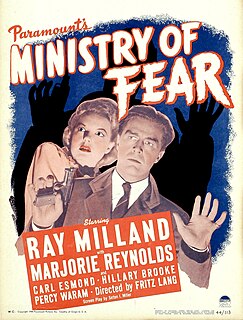
Ministry of Fear is a 1944 American film noir directed by Fritz Lang, and starring Ray Milland and Marjorie Reynolds. Based on the 1943 novel by Graham Greene, the film tells the story of a man just released from a mental asylum who finds himself caught up in an international spy ring and pursued by Nazi agents after inadvertently receiving something they want. The original music for the film was composed by Victor Young.
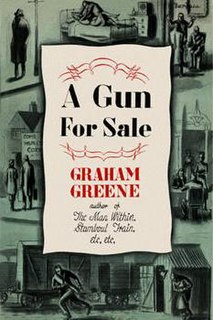
A Gun for Sale is a 1936 novel by Graham Greene about a criminal called Raven, a man dedicated to ugly deeds. When he is paid, with stolen notes, for killing the Minister of War, he becomes a man on the run. Tracking down the agent who double-crossed him, and eluding the police simultaneously, he becomes both the hunter and the hunted. The novel was published and filmed in the United States under the title This Gun for Hire.
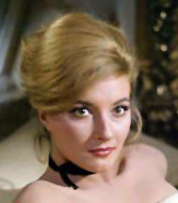
Tatiana Alexeievna "Tania" Romanova is a fictional character in the 1957 James Bond novel From Russia, with Love, its 1963 film adaptation and the 2005 video game based on both. She is played by Daniela Bianchi in the movie, with her voice dubbed in by Barbara Jefford.
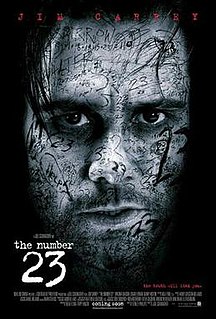
The Number 23 is a 2007 American thriller film written by Fernley Phillips and directed by Joel Schumacher. Jim Carrey stars as a man who becomes obsessed with the 23 enigma once he reads about it in a strange book that seemingly mirrors his own life. The film was released in the United States on February 23, 2007. This is the second film to pair Schumacher and Carrey, the first being Batman Forever. The film grossed $77.6 million, and has an approval rating of 8% on Rotten Tomatoes.

Call for the Dead is John le Carré's first novel, published in 1961. It introduces George Smiley, the most famous of le Carré's recurring characters, in a story about East German spies inside Great Britain. It also introduces a fictional version of British Intelligence, called "the Circus" because of its location in Cambridge Circus, that is apparently based on MI6 and that recurs throughout le Carré's spy novels. Call for the Dead was filmed as The Deadly Affair, released in 1966.

Brighton Rock is a 1948 British gangster film noir directed by John Boulting and starring Richard Attenborough as violent gang leader Pinkie Brown, Carol Marsh as the innocent girl he marries, and Hermione Baddeley as an amateur sleuth investigating a murder he committed.
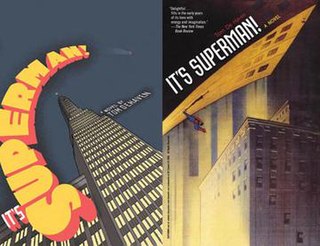
It's Superman! is a novel by Tom De Haven based on the comic book superhero Superman. It was released on September 15, 2005 in hardcover and August 29, 2006 in paperback. The premise tells the tale of Clark Kent's beginnings into becoming Superman, set in the 1930s, where Clark befriends a wrongly convicted photographer named Willi Berg, and is then taken from Kansas to Hollywood and finally in New York where he meets Lois Lane, fights Lex Luthor, as he debuts in his superhero persona. Despite the setting, this is not about the Golden Age Superman also known as the Superman of Earth-2; as Perry White, the Daily Planet, Lex Luthor's position and his trademark powers are not part of that alternate Earth. Rather, it's a Superman period piece set in the 1930s.

Guilford Street is a road in Bloomsbury in central London, England, designated the B502. From Russell Square it extends east-northeast to Gray's Inn Road. Note that it is not spelt the same way as Guildford in Surrey. It is, in fact, named after Frederick North, Lord North, a former Prime Minister, who was also 2nd Earl of Guilford (sic).

Spider's Web is a 1989 West German film directed by Bernhard Wicki. It is based on the 1923 novel by Joseph Roth. It was chosen as West Germany's official submission to the 62nd Academy Awards for Best Foreign Language Film, but did not manage to receive a nomination. The film was the last submission by West Germany, due to German reunification in 1990, Germany competed at the 63rd Academy Awards as a single country.

The English Assassin is a spy novel by Daniel Silva, published in 2002.

The Fallen Sparrow is a 1943 American spy film starring John Garfield, Maureen O'Hara, Patricia Morison, and Walter Slezak. It is based on the novel of the same name by Dorothy B. Hughes. Nazi spies pursue an American, John "Kit" McKittrick, a Spanish Civil War veteran in possession of a priceless keepsake, who returns home to find out who murdered his friend. It received an Oscar nomination for Best Scoring of a Dramatic or Comedy Picture.
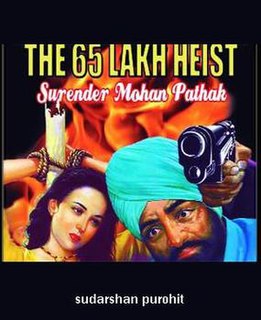
The 65 Lakh Heist is first English version of a Surender Mohan Pathak book. The Hindi crime thriller was first published in 1977. It was the 4th book in the Vimal series.

When Will There Be Good News? is a 2008 crime novel by Kate Atkinson and won the 2009 Richard & Judy Best Read of the Year at the British Book Awards. It is the third to involve retired private detective Jackson Brodie and is set in and around Edinburgh. It begins in Devon where six-year-old Joanna witnesses the brutal murder of her mother, sister and brother and barely escapes with her own life.



















